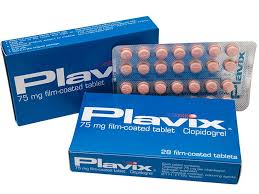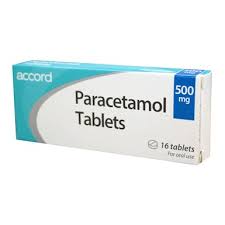Panadol
Panadol, an esteemed name in the realm of paracetamol (acetaminophen), stands as one of the most prevalent over-the-counter remedies across the globe. Renowned for its remarkable ability to alleviate discomfort and diminish fever, Panadol has become an essential component in many households for addressing minor health concerns. This article offers a comprehensive examination of its applications, advantages, potential side effects, and necessary precautions to ensure its safe and effective utilization.

Uses of Panadol
Panadol’s versatility is noteworthy, as it is employed to manage a variety of conditions, such as:
Pain Relief
– Tension headaches and migraines
– Toothaches and dental discomfort
– Muscle soreness and back pain
– Menstrual cramps
– Mild arthritis pain
Fever Reduction
Panadol is frequently utilized to alleviate fever linked to colds, influenza, or other infections.
Post-Vaccination Symptoms
It is often advised for both children and adults to mitigate fever and discomfort following vaccinations.
Cold and Flu Symptoms
Specialized formulations (like Panadol Cold & Flu) incorporate decongestants and additional active ingredients to tackle symptoms such as nasal congestion, sore throat, and body aches.
How Does Panadol Work?
While the precise mechanism of paracetamol remains somewhat elusive, it is believed to function by:
– Inhibiting the synthesis of prostaglandins in the brain, which are substances that incite pain and inflammation.
– Acting upon the hypothalamus to modulate body temperature, thereby assisting in fever reduction.
In contrast to nonsteroidal anti-inflammatory drugs (NSAIDs) like ibuprofen or aspirin, Panadol is distinguished by its lack of significant anti-inflammatory properties and its gentle nature on the stomach lining.
Dosage and Administration
Panadol is offered in a variety of strengths and formulations, with dosages tailored to the individual’s age, weight, and health status:
Adults and Children Over 12 Years
Generally, 500 mg to 1000 mg (1-2 tablets) may be taken every 4-6 hours as necessary.
Maximum daily allowance: 4000 mg (8 tablets of 500 mg).
Children Under 12 Years
Dosage is determined by weight, typically ranging from 10-15 mg/kg every 4-6 hours.
The maximum daily limit should not surpass 60 mg/kg in children.
Those with liver conditions or chronic alcohol consumption may need dosage adjustments due to an elevated risk of toxicity.
Note: It is imperative to adhere to the guidelines on the product label or seek advice from a healthcare professional. An overdose can result in severe liver damage.
Benefits of Panadol
Widespread Availability: Readily found in pharmacies and grocery outlets.
Stomach-Friendly: Generally does not induce stomach irritation or ulcers, unlike NSAIDs.
Safe for Most Individuals: Appropriate for use by pregnant women, nursing mothers, and individuals with certain health issues when taken as directed.
Rapid Relief: Offers alleviation within 30 minutes to an hour post-ingestion.
Potential Side Effects
When utilized as directed, Panadol is typically safe and well-tolerated. However, some possible side effects may include:
Mild Side Effects:
– Nausea
– Rash or allergic reaction (rare)
Serious Side Effects (Rare):
– Liver damage from overdose or extended use.
– Allergic reactions, such as swelling of the face, lips, or throat.
Risks of Overdose:
Exceeding the recommended dosage can lead to acute liver failure, necessitating immediate medical intervention.
Precautions and Contraindications
Liver Conditions:
Individuals with liver ailments or a history of alcohol consumption should refrain from surpassing the advised dosage.
Drug Interactions:
Panadol may interact with various medications, notably anticoagulants such as warfarin. It is imperative to verify the presence of paracetamol in combination medications to prevent unintentional overdose.
Pregnancy and Breastfeeding:
Regarded as safe for use during pregnancy and lactation when adhering to recommended dosages. Always seek medical advice prior to use.
Chronic Use:
Prolonged use without the guidance of a healthcare professional is discouraged, as it may result in dependency or hepatic damage.
Panadol vs. Other Pain Relievers
Panadol is frequently evaluated alongside NSAIDs (such as ibuprofen and aspirin) regarding efficacy and safety:
Advantages of Panadol:
It is a safer alternative for those with gastrointestinal issues or a history of ulcers. Additionally, it does not interfere with platelet function, rendering it a safer choice for individuals at risk of bleeding.
Disadvantages of Panadol:
It lacks anti-inflammatory effects, which may render it less effective for conditions characterized by significant inflammation, such as arthritis.
Conclusion
Panadol stands as a reliable and widely embraced medication for alleviating pain and reducing fever. Its commendable safety profile, accessibility, and efficacy render it a preferred choice for many. Nevertheless, as with any medication, it is essential to utilize it judiciously and in accordance with the prescribed dosage. Always consult a healthcare professional if you harbor concerns or possess underlying health conditions to guarantee the safe and effective use of Panadol.






